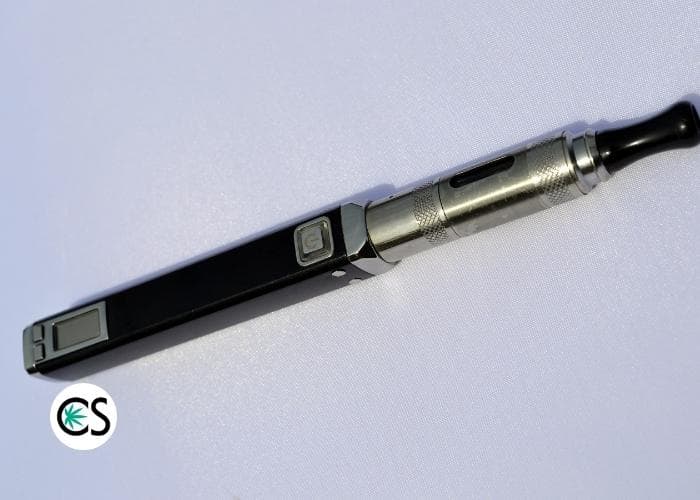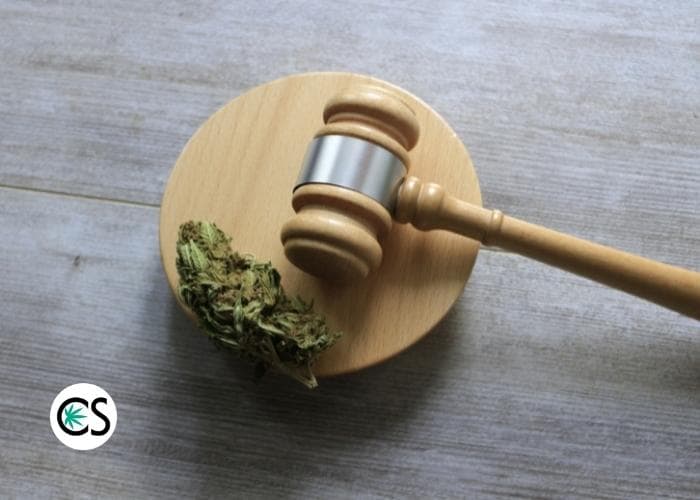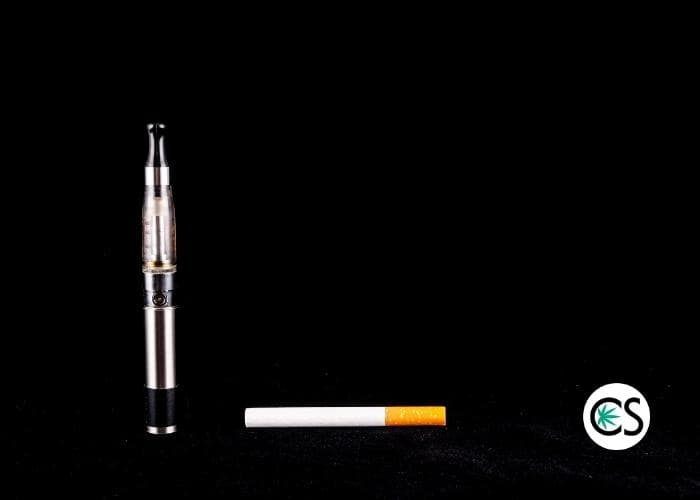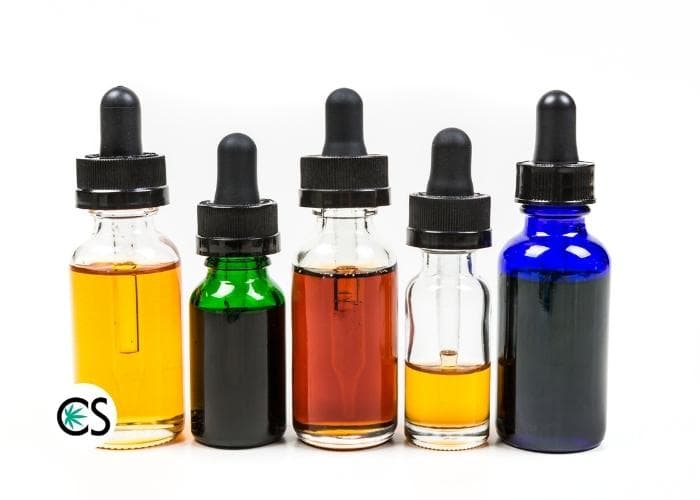What Is Vaporizing
“What is vaporizing” is a question many people have asked in the CBD world. Vaporizing is the process of heating a substance to its boiling point, causing it to change states from a liquid to a gas. Vaping is typically done using a vaporizer, a device that heats the substance to its boiling point without actually burning it.
Vaporizing has become a popular way to consume various substances, including nicotine, cannabis, and essential oils. Many people believe that vaporizing is a healthier alternative to smoking, as it does not produce any tar or other harmful chemicals.
Vaporizing can be done with various devices, including vape pens, e-cigarettes, and desktop vaporizers. These are all similar devices known as electronic nicotine delivery systems. Vape pens are the most portable option, while desktop vaporizers tend to be the most powerful.

Vaping CBD: What You Should Know
With the legalization of cannabidiol (CBD) products worldwide, many individuals have started to utilize them for their alleged medical benefits. Vaping is one way that CBD users consume the chemical.
The most accessible approach to feeling CBD’s effects is to breathe it in. Here’s all you need to know about the various types of CBD vape oil and their advantages and risks.
Understanding CBD Vaping
Cannabidiol (CBD), a chemical found in the cannabis plant Cannabis sativa, has been extolled for its therapeutic properties, including natural pain alleviation and anxiety relief. CBD is highly popular because, unlike delta-9-tetrahydrocannabinol (THC), the major mind-altering component in marijuana, it does not make you high.
CBD is also present in many of the most popular health and wellness products, including CBD oil. In addition, CBD can be found in commercial hemp products if they are made from cannabis plants that have been grown legally.
THC concentration must be less than 0.3 percent in CBD oil to be lawful within the US.

CBD products derived from the same plant, hemp, are legal on the federal level. However, they may be prohibited in certain states. (Both hemp and marijuana are Cannabis sativa plants with THC levels of less than 0.3 percent.)
Federal law prohibits the use, possession, and sale of cannabis products containing more than 0.3 percent THC. However, some states allow the use of CBD oils derived from marijuana.
Vaping CBD Explained
Vaping is one method to consume CBD, which has several advantages. First, because it travels swiftly from the lungs into the circulation, inhaling CBD produces near-immediate results.
However, there is a lot of disagreement among experts as to whether or not this fast-acting CBD vape should be approached with caution. Vape oils produced by licensed marijuana sellers are tested for possible hazardous contaminants, but unregulated vapes may have serious side effects.
Here’s what you need to know about CBD vape oil—also known as “vape juice” or “e-juice“—and less-harmful methods of consuming CBD.
What is CBD Vape Oil?
The main difference between hemp oil and CBD vape oil is that the latter is mixed with a carrier liquid (to thin the oil) before being vaporized in a vape pen.
It’s generally available in pre-filled cartridges that may be screwed into the vape pen, also known as a battery, which heats the solution to create a vapor that the user inhales.
CBD vape oil is similar to other CBD oils in that it comes in different varieties, like tinctures, concentrates and isolates.
CBD Vape Juice
According to studies, breathing oil of this sort might cause significant health issues such as lipoid pneumonia. So instead of vaping CBD oil intended for oral use, try one made especially for e-cigarettes.
CBD e-Liquid, on the other hand, is sometimes called “CBD vape oil,” but it does not contain any actual oil. Suppose it has anything different from PG, VG, CBD extract, terpenes, and cannabinoids. Check for the words vaping, vape juice, e-liquid, or e-juice (but also check to see whether there is no oil.)
Is E-Cigarettes the Same as Regular Cigarette Smoking?
E-cigarettes don’t contain tobacco, unlike regular cigarettes made from tobacco leaves. Instead, electronic cigarettes are battery-operated devices with a heating element and a cartridge containing liquid. Puffing on the e-cigarette device heats the liquid, which gives off vapor.
By comparison, the e-cigarette may appear to be a safe alternative. However, looking at what’s in the liquid deeper raises additional concerns. Even though nicotine for e-cigarettes is not legal in Canada, many e-liquids include it, as do many conventional cigarettes. In addition, other potentially harmful chemicals, such as propylene glycol (PG), may also be present, an ingredient found in numerous food products.

Another significant relation between the two sorts of smoking is that e-cigarettes mimic conventional cigarette smoking. Public health officials are now speaking out against making cigarette smoking acceptable again, a movement that may potentially reverse decades of stop smoking efforts. E-cigarettes should never be considered a safer nicotine replacement therapy alternative to regular cigarettes.
What Does the Food and Drug Administration Say About E-cigarettes?
The Food and Drug Administration began regulating e-cigarettes as “new tobacco products” in 2016 to minimize the dangers of their use. At the end of 2019, the FDA banned the sale of e-cigarettes to those under the age of 18 and imposed warning labels as a result.
In 2021, however, the Food and Drug Administration allowed R.J. Reynolds to sell three of its Vuse tobacco-flavored e-vapor products in the United States for the first time.
Do E-cigarettes Help Cigarette Smokers Stop Smoking?
Vaping simulates smoking that uses e-cigarettes and other devices. Battery-powered vape gadgets create an aerosol that appears like harmless water vapor but has nicotine, flavor, and more than 30 compounds. The aerosol is breathed into the lungs, where nicotine and chemicals enter the circulation via the lungs.
Electronic cigarettes have become increasingly popular in recent years, especially among smokers looking for a way to quit. While there is still some debate about the health risks of e-cigarettes, many experts believe that they are a safer alternative to traditional cigarettes.

Some studies have shown that e-cigarettes can be effective in helping smokers to quit. For example, one study found that smoking an electronic cigarette was almost twice as effective as nicotine patches in helping smokers to kick nicotine addiction.
Another study found that e-cigarettes were more effective than gum or lozenges in helping smokers to abstain from smoking for at least six months. However, it is important to note that e-cigarettes are not entirely risk-free.
Do Vaping Devices Produce Secondhand Smoke?
Vaping creates an aerosol cloud. The aerosol mist includes ultrafine particles inhaled into the lungs, unlike water vapor. Therefore, Vaping devices do not produce secondhand vapor.
People around cigarette smokers, including vapers, are at risk of inhaling secondhand smoke, which is toxic to their health.

Third-hand smoke on clothing and furniture is intense and dangerous for persons with respiratory issues. Vaping doesn’t create the same toxic vapors as cigarettes, but the secondhand vapor contains chemicals and compounds that pollute indoor air.
Are E-cigarette Users Exposed to Volatile Organic Compounds?
E-cigarettes expose users to lower amounts of toxic VOCs than conventional cigarettes, supporting their harm reduction potential among smokers. Some e-cigarettes, on the other hand, expose consumers to VOCs such as acrylamide, benzene, and propylene oxide, which might pose health concerns for non-smokers.
Vaping exposes people to fewer toxic chemicals than smoking, but some risks are associated with e-cigarettes. Therefore, E-cigarettes should never be considered a safer alternative to regular cigarettes.
What You Need to Know About Flavored Vaping Products
E-cigarettes and vaping are becoming increasingly popular among teens. As a result, E-cigarette use is a significant concern among teenagers, particularly those under 18, and an increasing number of kids who have never smoked.
These teens are at risk of becoming hooked on the nicotine in e-cigarettes and vaping devices, and the attractiveness of vape flavors may be attracting them. The popularity of vape flavors rather than flavor components themselves can pose a broader public hazard.

Vaping products are available in several flavors, such as strawberry, root beer, and chai tea, making them immensely appealing to kids and teenagers. But unfortunately, companies are using e-cigarette flavoring chemicals to create many different flavors that may contain dangerous substances that may have adverse health effects.
Are There Any Risks with Using a Vaping Device?
The FDA does not regulate CBD oil products in the United States. Vape pens produce condensation aerosols that may be used as effective drug delivery systems. However, consumers must be wary that not all items contain the amount of CBD stated on the label.
People may be exposed to unknown amounts of CBD and other substances that may cause harm since there is no quality control.
Remember, when it comes to CBD oil vaping, err on the side of caution. Make sure you go to a trustworthy source and double-check that the CBD product has passed third-party testing and has a Certificate of Analysis (COA) available to back it up.
Takeaway
So, there you have it. Vaporizers heat cannabis oil to a temperature just below the point of combustion, releasing active cannabinoids in a vapor that can be inhaled. The vapor allows people to enjoy the benefits of cannabis without smoking it, which can be harmful to their lungs.
Vaporizing is seen as a healthier alternative to smoking, and it’s also been shown to provide quick relief from various medical conditions. So if you’re looking for a way to consume cannabis without smoking it, vaporizing may be the best option.
